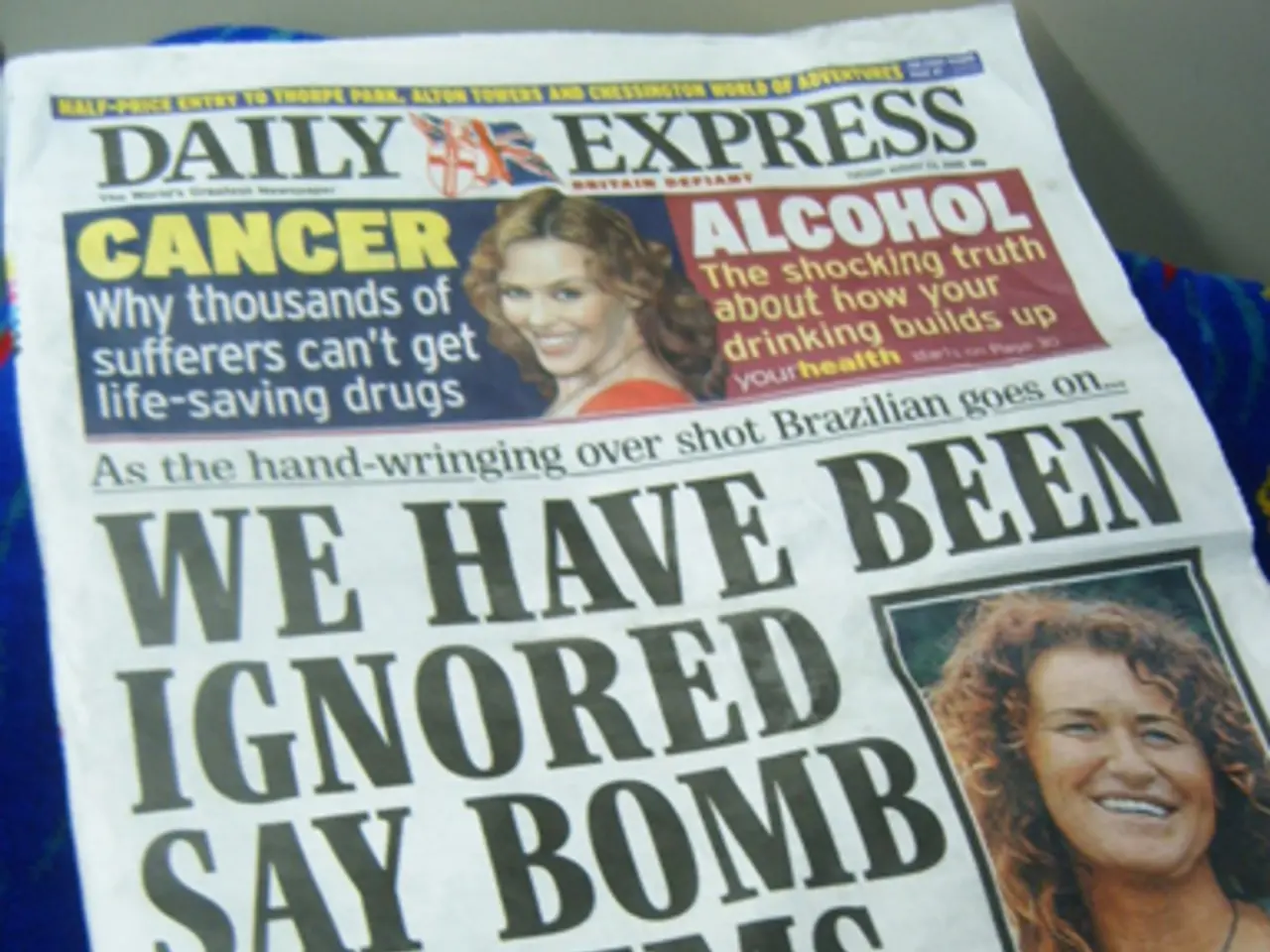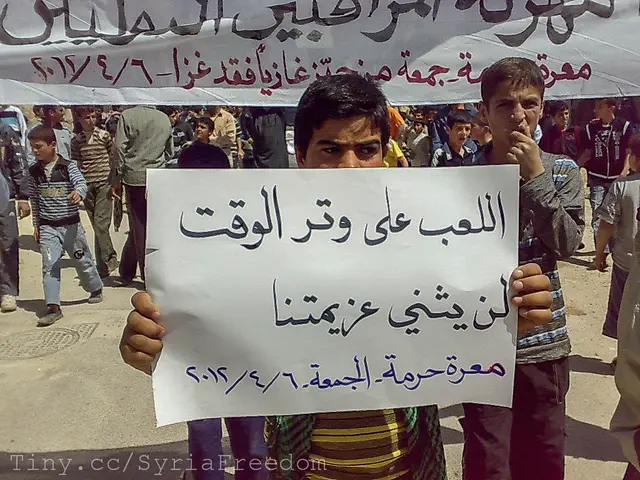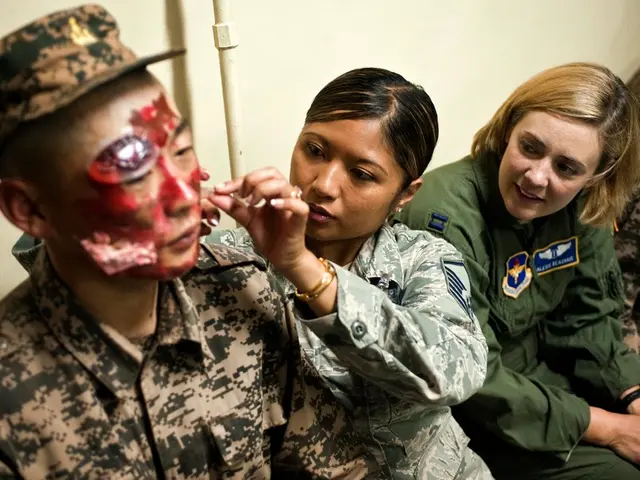Journalists Arrested in Sequential Days: Iranian Report Reveals Three Female Reporters Detained
In the heart of the ongoing protests in Iran, authorities have classified the unrest as "troubles," reporting numerous deaths and thousands of arrests, including approximately 80 reporters over the past four months. Among the detained journalists are Melika Hashemi, a journalist for Shahr, Saideh Shafiei, an independent storyteller, and Mehrnoush Zarei, who writes for numerous reformist magazines.
The recent arrests reflect a broader clampdown on press freedom in the country. A timeline of events sheds light on the escalating situation:
**Timeline**
- **Start of 2025**: Six of the nine journalists imprisoned in Iran were women, including Nasrin Hassani, Zhina Modarres Gorji, Shirin Saeidi, Saeedeh Shafiei, Vida Rabbani, and Cecilia Sala (an Italian journalist). - **First Half of 2025**: Despite some releases (Saeedeh Shafiei, Vida Rabbani, and Cecilia Sala), by mid-year, half of the imprisoned journalists were still women, with Nesrin Hassani, Zhina Modarres Gorji, and Shirin Saeidi in custody. - **June 2025**: Iran detained the family members of a woman journalist reportedly working for *Iran International* in retaliation for the channel's coverage of the Israel war, forcing her to consider resignation.
**Reasons for Arrests**
1. Criticism of Government Policies: Journalists are often arrested for criticizing the government's inefficiencies or reporting on corruption within government institutions. 2. Coverage of Sensitive Topics: Publishing reports on Iran's international policies, particularly regarding Iran-U.S. negotiations and the Iran-Israel conflict, has led to judicial actions against journalists. 3. Retaliation: The detention of family members in response to specific coverage (e.g., the Israel war) highlights a broader pattern of coercion used by Iranian authorities.
**Impact on Press Freedom**
1. Increased Judicial Actions: Between January and June 2025, 95 journalists faced 110 judicial and security actions, marking a significant escalation of press freedom violations. 2. Threats and Intimidation: The use of threats against imprisoned journalists like Narges Mohammadi, who has been targeted by calls for violence on social media, further intimidates dissenting voices. 3. Global Concern: The situation has sparked global human rights alarms, with organizations like Amnesty International and Reporters Without Borders highlighting the deteriorating press freedom conditions in Iran.
The death of Mahsa Amini, a 22-year-old Iranian Kurd, on September 16 sparked demonstrations across Iran, which have been ongoing since that date. The exact number of deaths due to the protests is not specified, but over 300 Iranian journalists signed a declaration criticising the authorities for "jailing colleagues and removing them of their rights" in late October. The three most recent apprehensions of journalists, Hashemi, Shafiei, and Zarei, took place in Tehran within the past 48 hours. The reasons for their arrests are not yet specified.
The authorities claim that individuals, including members of the security forces, have been killed and thousands have been detained during these "troubles." These journalists were moved to Evin prison, where most of those arrested in connection with the protests are being held. The objections in Iran have been ongoing since September 16.
- The death of Mahsa Amini on September 16 and the ongoing protests in Iran have further highlighted the ongoing clampdown on press freedom in the country, as seen by the recent arrests of Melika Hashemi, Saideh Shafiei, and Mehrnoush Zarei, which come under the umbrella of 'general-news'.
- In the first half of 2025, six of the nine imprisoned journalists in Iran were women, including Zhina Modarres Gorji and Shahr's Nasrin Hassani, demonstrating a gender-specific focus within 'womens-health' and 'health-and-wellness' in the context of the impact on press freedom.
- The arrests of these journalists often stem from their coverage of sensitive topics such as Iran's international policies and the Iran-Israel conflict, thus falling under 'politics' and 'science', respectively, as they involve international policies and conflict-related reporting.





